A One-Stop Shop for Cardiac Imaging Services
The Heart Institute has recently renovated and relocated all its cardiac imaging services into one centralized area, and the results are quite impressive. Prior to the move on June 22, 2019, imaging services were scattered across the hospital in very tight spaces. Now, the following services can be found in one place:
– Echocardiograms – Holter monitors
– Nuclear Cardiology – Stress tests
– Cardiac CT scans – PET/CT scans
– Cardiac MRI scans – General X-rays
These services are located on the S-level, the lower level below the main lobby at 40 Ruskin Street. Registration for these services has been streamlined and occurs in the new spacious reception and waiting area as you enter the Heart Institute from Ruskin Street.
Many new pieces of equipment were purchased as part of the move: new echocardiography machines, two new nuclear cardiology cameras and a new X-ray system. The space also includes a new nursing area for patients to be prepared for their procedure, recover and be monitored following their procedure, a consultation room for doctors to meet with patients and their families, and some additional space available for future expansion.
This move provides a more convenient, consolidated, and streamlined service for patients, while also improving workflow and collaboration for hospital staff. While the move was taking place, hospital staff were transitioning to the new EPIC integrated electronic patient care system, another major upgrade in service delivery. With EPIC, updates to a patient’s chart are entered directly into a digital medical record (instead of the former paper record-keeping system), so chart information as well as imaging and laboratory results are now easily accessible by all hospital services and feeder hospitals, and by patients themselves through the patient portal MyChart. MyChart also has a functionality to share results with family physicians.
The UOHI’s Cardiac Imaging Centre services are an important foundation in cardiac care for the Champlain Region, serving the Ottawa area as well as 14 feeder hospitals. Their specialized services, procedures and state-of-the-art equipment have also brought in patients from other areas of Canada as well as the United States. In addition to more than 60,000 visits per year for clinical care, the UOHI’s Cardiac Imaging Department is a leader in research, developing new types of imaging testing and applications – for example, cardiac imaging tests can sometimes be offered as an alternative to more invasive procedures. The Cardiac Imaging Centre at the UOHI also provides training opportunities for multiple colleges and universities.
Thank you to the Department of Cardiac Imaging administrative teams, technologists, nurses and physicians for all of their hard work during this transition. The beautiful and functional new space will benefit all current and future patients who require these specialized services.
Photo Gallery of the New Centre of Excellence for Cardiac Imaging
Below is a photo gallery of the new Centre of Excellence for Cardiac Imaging. A short description accompanies each photo; for more information on each test including what to expect and how to prepare for your appointment, please visit the Tests and Procedures page of the Heart Institute website (Tests are listed in the left-side menu).
Echocardiograms
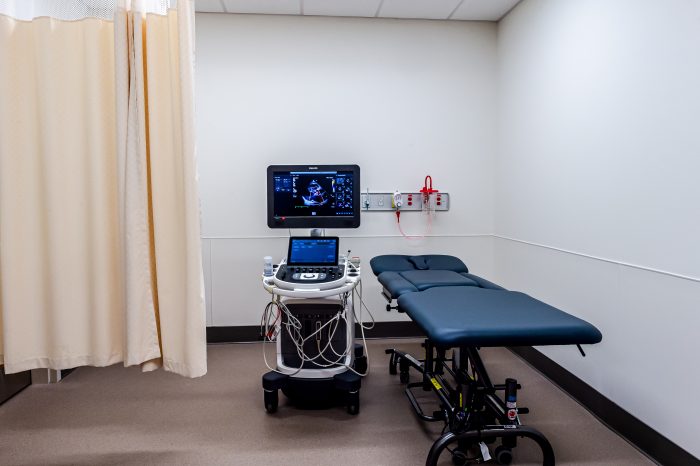
A standard echocardiogram (echo), also known as a transthoracic echocardiogram (TTE), is an imaging technology that uses ultrasound to create images of your heart. It is a diagnostic test used to examine the heart and its blood supply, determine how large the heart is, how well it contracts, and how the valves function. For more information about this test including what to expect and how to prepare for your appointment, please see the Echocardiogram page on the Heart Institute website.
Stress Tests
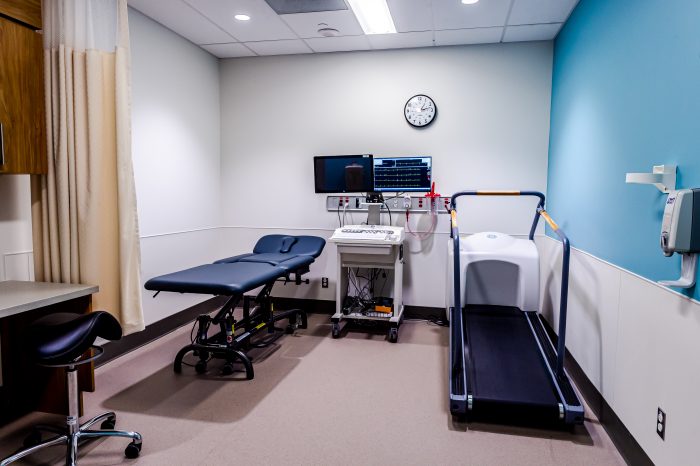
A treadmill exercise stress test is used to determine the effects of exercise on the heart. Exercise allows doctors to detect abnormal heart rhythms (arrhythmias) and diagnose the presence or absence of coronary artery disease. This test involves walking in place on a treadmill while monitoring the electrical activity of your heart. Throughout the test, the speed and incline of the treadmill increase. The results show how well your heart responds to the stress of different levels of exercise. For more information about this test including what to expect and how to prepare for your appointment, please see the Treadmill Exercise Stress Test page on the Heart Institute website. Information on related tests can also be found on the Stress Echocardiogram and Stress Myocardial Perfusion Imaging pages.
Nuclear Cardiology
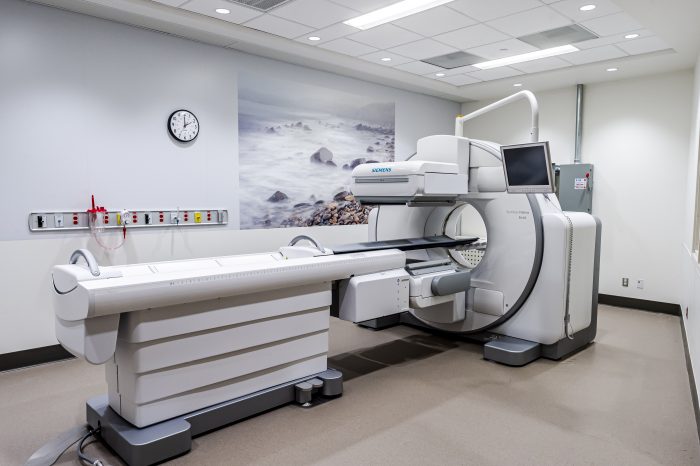
Nuclear stress myocardial perfusion imaging (MPI) is a nuclear cardiology test that shows how well blood flows to the muscle of the heart (myocardium). This test is used to diagnose the presence or absence of coronary artery disease. For more information about this test including what to expect and how to prepare for your appointment, please see the Stress Myocardial Perfusion Imaging page on the Heart Institute website.
A multigated acquisition (MUGA) scan is a cardiology imaging test that provides detailed information about blood flow through the heart and how well the heart pumps during rest. For more information about this test including what to expect and how to prepare for your appointment, please see the Nuclear Multigated Acquisition Scan page on the Heart Institute website.
Cardiac CT Scans
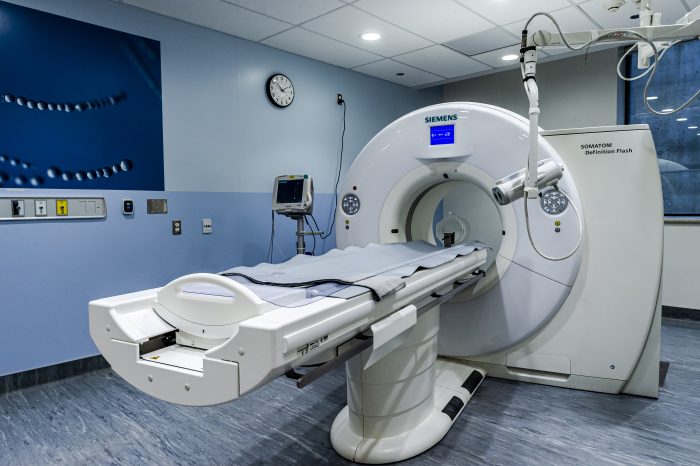
Cardiac computed tomography (CT) is an imaging process that uses X-rays to show details of the arteries and veins of the heart. The images are used to determine whether plaque or calcium deposits are present in your blood vessels and whether they are causing a blockage. For more information about this scan including what to expect and how to prepare for your appointment, please see the Cardiac Computed Tomography (CT) Scan page on the Heart Institute website.
PET/CT Scans
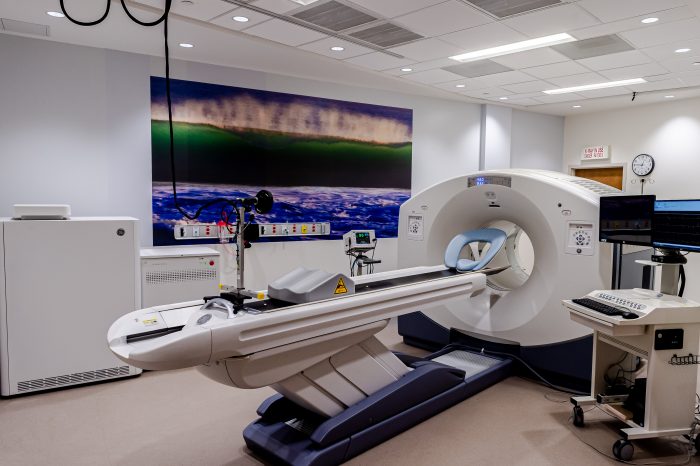
Positron emission tomography (PET) viability imaging is used to assess how much heart muscle has been damaged by a heart attack or heart disease. This test is used to determine whether a patient may need angiography, cardiac bypass surgery, heart transplant or other procedures. For more information about this test including what to expect and how to prepare for your appointment, please see the PET Viability Imaging page on the Heart Institute website.
Positron emission tomography (PET) myocardial perfusion imaging (MPI) is an imaging process that shows how well blood flows to the muscle of the heart (myocardium). This test is used to diagnose the presence or absence of coronary artery disease. For more information about this test including what to expect and how to prepare for your appointment, please see the PET Myocardial Perfusion Imaging page on the Heart Institute website.
Radiology
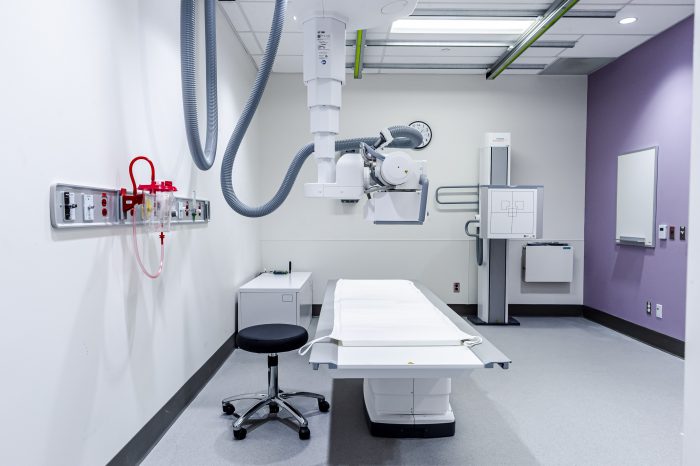
A chest X-ray shows details of the heart, lungs, blood vessels and bones. The radiation created by the X-ray machine passes though the chest and an image is captured on a special digital detector. Different parts of the body absorb different amounts of radiation. The parts of the body that absorb the most radiation, like bones, appear white on the X-ray image. Parts of the body that absorb less radiation, like the heart, will look various shades of grey. Air spaces, like the lungs, look black. A chest X-ray can be used to evaluate how large the heart is and whether there is fluid in the lungs (pulmonary edema) caused by heart failure. Often, more detailed images are required to confirm problems seen on a chest X-ray. For more information about this test including what to expect and how to prepare for your appointment, please see the Chest X-ray page on the Heart Institute website.
MRI

Cardiac magnetic resonance imaging (cardiac MRI) is used to see the structure and function of your heart, valves and major arteries and veins. This test helps your doctors diagnose and assess coronary artery disease, heart failure and heart defects. MRI uses radio-frequency waves and very strong magnets to produce images of the body. It does not use radiation. The MRI scanner (magnet) has a donut-shaped opening that a platform or table moves through. The scanner takes images of a patient as the patient passes through the machine while lying on the table. For more information about this test including what to expect and how to prepare for your appointment, please see the Cardiac MRI page on the Heart Institute website.
